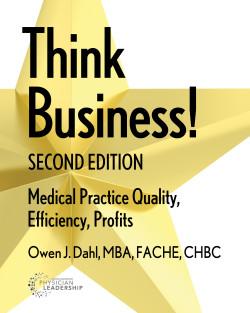Summary:
When an employee leaves, it is not just about finding a replacement. It is about reassessing, reorganizing, and understanding why they left. Retention is key. Invest in your team, give them autonomy, and involve them in problem-solving.
What is the first thought that goes through your mind when an employee leaves? It should be “Do I need to replace that person?” Can you rearrange the steps in the process to eliminate that position?
If not, can you get a replacement with the right skill set and the right personality? As we will see below there is a cost of turnover. It is not in your personnel budget, but it should be. Your practice must have a plan to deal with replacing employees who leave, along with a budget that addresses the issue of turnover costs.
Your next question when an employee leaves should be “Why did he or she leave?” Retention of employees is essential for continuity and to control costs. One reason is that retaining employees is far less costly than recruiting. On the other hand, retaining employees is the biggest challenge to any organization in today’s mobile knowledge-based society.
An employee is an asset and brings value to an organization. A highly trained registered nurse, laboratory technologist, or nuclear medicine technician all bring refined skills to the job. They are sought after by competing organizations that offer money, involvement, a chance to advance, or an increased learning opportunity, all of meet the employee’s higher-level needs. It is this employee who is not hard to motivate but is hard to retain.
It is a mistake to think of retention only in terms of wages or salary. In a real sense, retention is based on giving employees the autonomy to use their skills to achieve quality patient care and giving them the tools they need to practice their skills. For example, if a new procedure is needed, give them the responsibility of leading a team that will work to create it.
Here is another example. The receptionist may not be at the level of self-actualization, but she may want to be. A way to help employees reach that level is to give them the chance to improve their job, to make the patient interaction more effective. Here is one scenario. The physician is an hour late and the receptionist is fielding complaints from the patients. “Where is the doctor? Why is she late? My appointment was over an hour ago.”
Now, what if the receptionist was part of a team that was involved in helping to solve the delay problems? What if they came up with an idea that would help smooth out the physician’s schedule? What if they proposed having a TV or new periodicals in the reception area? (We don’t have waiting rooms anymore, since we don’t want to imply that anyone has to wait.) What if they explored a better way to communicate clinical activities to the front desk? For example, are the physician and the clinical care team running late because there was a difficult procedure?
Excerpted from Think Business: Medical Practice Quality, Efficiency, Profits by Owen J. Dahl, MBA, LFACHE, CHBC.
Topics
People Management
Communication Strategies
Strategic Perspective
Related
Managing a SlobManaging Your Team’s Weakest LinkThe Gen AI Playbook for OrganizationsRecommended Reading
Operations and Policy
Managing a Slob
Operations and Policy
Managing Your Team’s Weakest Link
Operations and Policy
The Gen AI Playbook for Organizations
Problem Solving
New Research on How Women in Leadership Navigated Menopause
Problem Solving
A Smarter Way to Disagree
Problem Solving
Coaching by Doctors for Doctors


